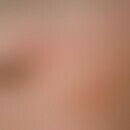Synonym(s)
DefinitionThis section has been translated automatically.
petals, rose petals, Rosa centifolia, the vinegar rose and Damask rose. Rose petals are used to extract rose oil.
The quality is specified in the European Pharmacopoeia (Ph. Eur.).
The petals of the rose hip bush also belong to the Rosae flos
HMPC monograph: Traditional-use: mild inflammation of the mouth and throat, mild skin inflammation
Commission E monograph: mild inflammation of the oral and pharyngeal mucosa
see also under Rosae pseudo-fructus cum fructibus
IngredientsThis section has been translated automatically.
Rose petals contain essential oils, including nerol, L(-)-citronellol, geraniol, tannins, ascorbic acid and carotenoids.
You might also be interested in
EffectsThis section has been translated automatically.
Rose petals have an astringent and anti-inflammatory effect.
Field of application/useThis section has been translated automatically.
Rosae flos is used for mild inflammation of the mucous membranes of the mouth and throat and as a massage oil during birth.
DosageThis section has been translated automatically.
The daily dose of the drug is 1 to 2 g, each of which is added to 200 ml of water and consumed as tea.
Undesirable effectsThis section has been translated automatically.
There are no known adverse effects.
ContraindicationThis section has been translated automatically.
Allergy to any of the ingredients, children and adolescents under 12 years, allergy to any of the ingredients. no data for pregnancy and lactation.
InteractionsThis section has been translated automatically.
There are no known interactions with other drugs.
LiteratureThis section has been translated automatically.
- Hermann PT et al (2014) In: Hunnius, Pharmazeutisches Wörterbuch, De Gryuter GmbH, Berlin, Boston, p. 1565
- Schilcher H (2016) In: Leitfaden Phytotherapie, Urban & Fischer Verlag Munich, p. 272 f
- https://arzneipflanzenlexikon.info/hagebutte.php
- https://arzneipflanzenlexikon.info/rose.php




